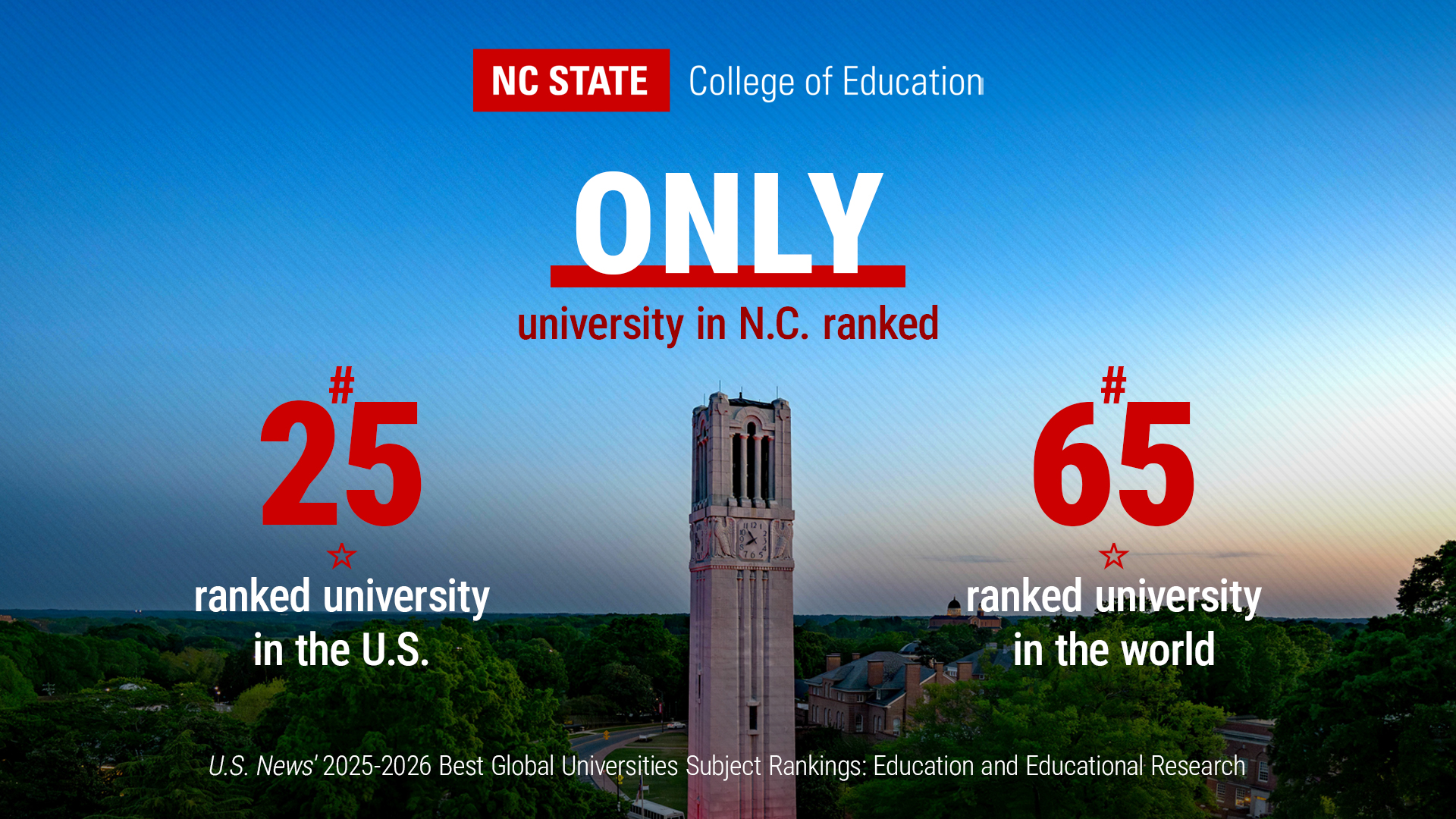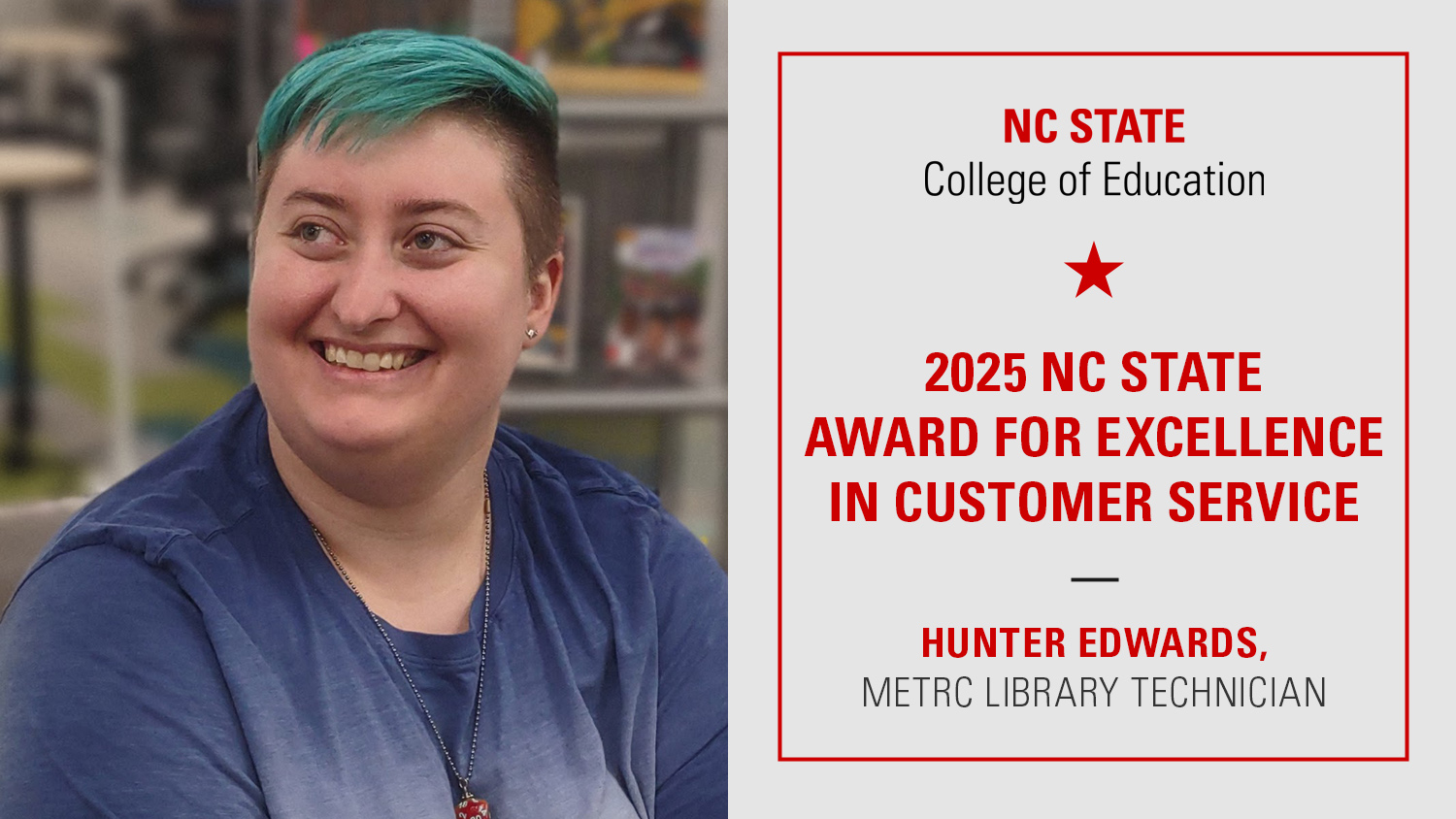How Can Educators Help Linguistically Diverse Students in Rural Schools? ‘We Need to Think About the Expectations That We Have For Our Students’ Says Goodnight Distinguished Professor in Educational Equity Maria Coady
No matter where an educator teaches, they are likely to encounter students who are multilingual, but not all educators are equipped with the skills or tools needed to adequately meet the needs of these students. This is particularly true, said NC State College of Education Goodnight Distinguished Professor in Educational Equity Maria Coady, in rural areas where resources may be limited.
Place matters in education, but there is no one-size-fits-all solution to serving multilingual students in rural settings, said Coady. She has spent the past two decades studying ways to prepare educators for linguistic diversity in their own regions and school districts.
Various rural districts could have different densities of multilingual learners, different languages spoken by multilingual families, different linguistic resources to draw upon and different levels of preparation related to linguistic diversity for educators in the school system.
“There is a saying in the field that goes, ‘When you’ve seen one rural place, you’ve seen one rural place.’ I think that really holds true in the field of multilingualism and multilingual education,” Coady said. “Part of the research is working with differences in and across rural and linguistic communities and then identifying solutions for those unique places.”
What Are Some Solutions to Common Struggles Rural Schools Face?
A lot of educational research over the past several decades, Coady said, has focused on underserved urban communities; it is also important to look closely at the ways in which rural schools and communities function in order to better serve linguistically diverse students.
Many rural schools, for example, face structural inequities because school districts are largely funded by property taxes and an agricultural community would not pay the same type of taxes as a suburban community. Rural districts may also not always have access to equitable after- school programs or services to assist in home learning or language learning.
Additionally, many rural regions have limited broadband access and more families that struggle with food insecurity.
“These are the things that make a difference in the kind of research and the kind of solutions and co-solutions we can create with educators to identify problems of educational practice and resolve some of those problems,” Coady said.
By law, schools are required to communicate with students’ families in the languages that they use at home whenever possible. But one of the most common issues Coady said she has repeatedly witnessed in her work with rural schools surrounds family engagement and communicating with families who speak languages other than English.
As a result of the COVID-19 pandemic and virtual learning, Coady said several technological resources have emerged to help educators communicate with multilingual students and their families. For example, many schools use the Remind App, which allows a teacher to speak a message in English for automatic translation into Spanish. When families receive the message, they can reply in Spanish and their response will be automatically translated into English for the teacher to read.
The downside of these technologies, Coady said, is that while they may be sustainable for commonly spoken languages like Spanish, French or Mandarin, it would be less useful for a language like Akan, a Guyanian language she heard several students using during a recent visit to a rural North Carolina school.
Additionally, when families need interpretation related to topics like special education services for multilingual students, Coady said it is crucial that schools and families rely on professional translators for assessments and meetings. If a district does not have access to an in-person translator for a specific language, there are multiple teleservice options to meet the need.
School leaders can also help improve linguistic diversity in their schools, Coady said, by hiring bilingual paraeducators and supporting bilingual paraeducators who want to earn their full teaching licensure or receive an English as a second language endorsement in the state.
Coady is working with school officials to improve multilingual learning in the state through a November presentation to the North Carolina School Board Association focused on equity and access in education for multilingual learners.
Through her work in the College of Education, she also hopes to ultimately create a network that would allow all multilingual educators in North Carolina to be able to collaborate together and share resources and solutions to challenges they’ve faced in their own classrooms.
“These teachers are their own best advocates because they understand how rural communities function and the challenges surrounding hiring and retaining educators who are linguistically diverse. They understand the landscape, and they understand the issues around migrant and mobile populations that come through the state and then move elsewhere,” she said. “There’s a lot of knowledge here already, and I think sharing that knowledge is exponential.”
What Should I Do if I Have a New Multilingual Student in My Classroom?
Over the past decade, North Carolina has seen a 160% increase in multilingual students across the state, so whether an educator is in a rural, urban or suburban part of the state, they will need to understand how to work with multilingual students, Coady said.
“It doesn’t matter if you want to stay in Wake County or go to Mecklenburg County, or if you go to Duplin County, Robeson County or Harnett County. If you go to any one of these districts, you’re going to come across linguistically diverse students and families,” she said.
When a teacher has a student who speaks a language other than English join their classroom, there are several steps an educator can take to both help the child feel welcome and learn how to best address their language and learning needs.
The first thing Coady recommends is getting to know the student on a personal level. Educators not only need to know where the student came from before arriving in the United States and when they got to the country but how they arrived and the experiences they went through in leaving their home country.
“We see immigrants and refugees that come from many war-torn countries around the world and those students’ experiences might have been in refugee camps; they may have interrupted education for multiple years,” she said. “These are issues of trauma that students could be facing, so it’s not just about the language.”
When getting to know a multilingual or non-English speaking student, Coady said it’s important for educators to find out what knowledge the student already possesses in their native language, whether they understand reading, writing and print literacy in their native language and what types of literacy activities they have already engaged in at home.
Beyond academic needs, it is also important for educators to understand an immigrant or refugee student’s home situation. For example, when Coady was working with an English as a second language educator in Granville County, they shared that they had several new students from various parts of South America, many of whom did not yet have beds, plates or basic household necessities in their living space.
“We can figure out some ideas to address these issues, but the fact that this educator knew that is a really good sign. I would like every teacher [to know these things about their students],” Coady said.
Once an educator understands their student on a personal level, they can better focus their efforts on learning. To best help multilingual students as they learn English – and to help them feel their background and culture matter in the classroom– Coady suggests the following tips:
- Slow down speech: Although it may feel unnatural and uncomfortable to speak extremely slowly, speaking this way will help the student better learn the language because they have time to hear the sounds and process what is being said.
- Avoid colloquial language: Using expressions that are unique to the English language, or even to a specific region in the United States, can be confusing for students who are non-native speakers. For example, if a teacher says “It’s raining cats and dogs,” an English language learner would not immediately understand that means it’s raining hard.
- Introduce multilingual texts in the classroom: Having literature that uses multiple languages and creating a classroom where students have an opportunity to see different prints and linguistic systems not only helps children of various linguistic backgrounds feel welcome, but helps students gain a greater understanding of the world around them.
“Remember, we don’t expect babies to come out, even within a year or two, producing language other than a few sounds or utterances, so we need to think about the expectations that we have for our students who are immediately put into print environments where they need to become literate in academic language tasks,” Coady said.
- Categories:



